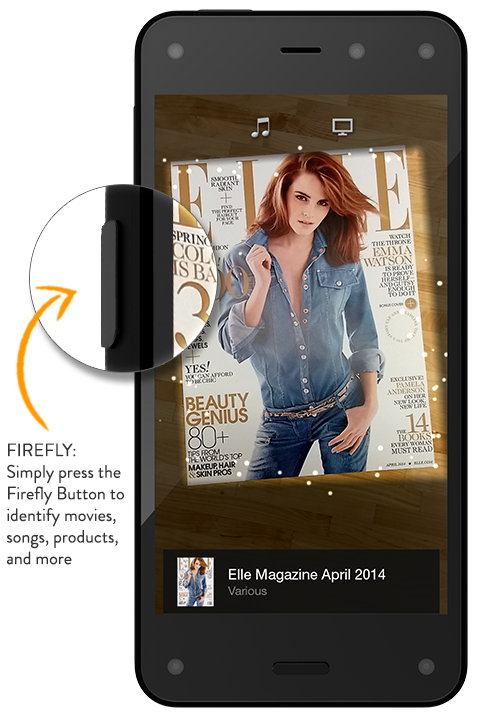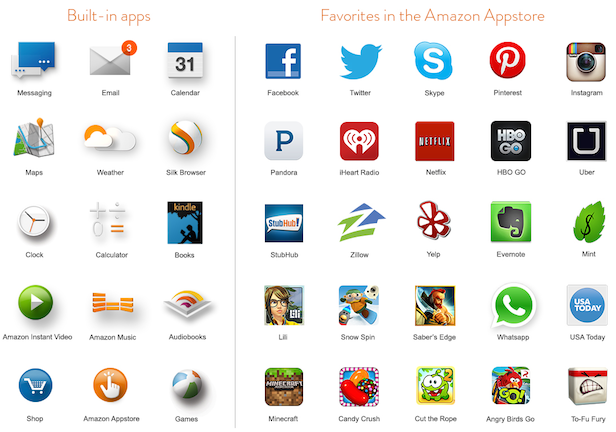Last week, Jeff Bezos, Amazon’s CEO unveiled the new long-anticipated smartphone, called the Fire Phone. The new phone looks similar to the iPhone and some other Android devices, however it comes fully loaded with features that will be loved by Amazon’s hard core fans, especially those who already own Kindle Fire tablets.
I won’t get too much into the technical specs of the Fire Phone or how it compare to Apple’s iPhone or other Samsung smartphones since that’s beyond the scope of this article, but let’s just say that phone size, LCD display, cameras resolution, processor, etc. are equal or in some cases, superior to those of its current competitors.
However, as the largest online retailer and the world’s leader in e-Commerce, Amazon didn’t just intend to come up with another smartphone; their main goal was to create a device that would seamlessly connect with all of their other products and services making it a superior e-Commerce tool just as much as a smartphone.
One of the unique features of the new Fire Phone is called Firefly. In essence, this feature lets you point your camera at random things or objects ‘on the fly’ and the phone will recognize what they are. You can point your camera at any type of products, QR codes, web pages, article photographs, etc. The phone also keeps a history of the things you scan, and of course, in true Amazon spirit, it will allow you to connect directly to Amazon’s online store to buy those same products online or add them to your Wish List. According to Amazon’s information, Firefly recognizes over a hundred million items, and this feature is so relevant for the Fire Phone that the phone itself was designed with its own physical “Firefly Button” on the side.
As if the traditional “Brick and Mortar” stores were not already irritated by constantly playing the role of a “showroom” for Amazon shoppers, this new Firefly feature is just going to take them over the edge. What are retailers such as Target, Best Buy, or Wal-Mart going to do now to fight a new phone that makes showrooming even easier for consumers? Time will tell, but remember that a couple of years ago, Target already decided to stop selling Amazon’s Kindle devices as a payback against Amazon’s encouraging behavior towards showrooming.
Here is a list of specific Firefly features as listed by Amazon:
Phone numbers, web, and email addresses: Firefly identifies printed text on signs, posters, magazines and business cards—make a call, send an email, save as a contact, or go to the website without typing out long URLs or email addresses.
Movies & TV: Firefly recognizes over 240,000 movies and TV episodes, and 160 live TV channels. Firefly uses X-Ray, powered by IMDb, to show information on actors, plot details, and related content—add titles to your Watchlist or download to watch later.
Music: Firefly recognizes songs so you can access artist information, play related songs, download albums direct to your Fire phone, or add them to your Wish List to purchase later on. With Firefly-enabled apps like iHeartRadio and StubHub, you can create radio stations based on an identified artist, or even find tickets for their next show.
Over 70 million products: Recognize household items, books, DVDs, CDs, video games, and more. Access product details, add items to your Wish List, or order on Amazon straight from your Fire phone.
The Firefly SDK is now available so developers can invent new ways to use this advanced technology. Later this year, Firefly will include artwork recognition, foreign language translation, and wine label recognition powered by Vivino.
The Fire Phone also includes other unique features such as Dynamic Perspective. Amazon says:
“Fire is the only smartphone with Dynamic Perspective and Firefly, two new breakthrough technologies that allow you to see and interact with the world through a whole new lens. Dynamic Perspective uses a new sensor system to respond to the way you hold, view, and move Fire, enabling experiences not possible on other smartphones. Firefly quickly recognizes things in the real world—web and email addresses, phone numbers, QR and bar codes, movies, music, and millions of products, and lets you take action in seconds—all with the simple press of the Firefly button.”
For those who love music apps, the new Amazon smartphone also includes a Shazam-like application that identifies songs for you and you can also purchase directly from the Amazon store. It can also identify shows that you may be watching as well as give you additional information about random subjects, which often include Wikipedia descriptions.
But perhaps one of the most unusual features of the Fire Phone is the fact that the device can tell the position of your head all the time thanks to the four cameras and infrared sensors that work in sync to track your head motion. This may sound a bit intrusive to some, and even Amazon CEO Jeff Bezos admitted that it was a little “creepy.” The new Dynamic Perspective feature that allows you to “tilt, auto-scroll, swivel, and peek to navigate menus and access shortcuts with one hand” and “peek to see detailed views of clothing, shoes, and more in the new Amazon Shopping app,” is made possible thanks to this head motion tracking feature.
As you would expect from Jeff Bezos and Amazon, the real intent of this new phone is to keep you constantly connected to Amazon’s world. If the previous versions of Amazon Kindle devices already did that, the new Fire Phone takes this goal to a new level. This is no different than Apple constantly trying to keep its users within the Apple environment through their iPhone, iPad, iTunes store, iCloud, etc. or Google doing the same through all of their hardware and software offerings. In other words, we’re not far from a world in which consumers will eventually select which “environment” they prefer and pick a device that best suits their needs, whether it be Amazon’s world, Apple’s or Google’s.
As expected, the Fire Phone uses Amazon’s Silk browser. The graphic below from Amazon’s own website already shows how the phone is trying to keep users within its own ecosystem by not inviting them to use any app that is Google related.
To view all other Amazon Fire Phone apps, you can click here.
For now, the Fire Phone is only available on AT&T and it costs $199 with a two-year contract. In addition, you will also get a free year of Amazon Prime (a $99 value). I’m very curious to see in a few months how many consumers actually buy the new Fire Phone from Amazon, and especially, whether they switch from Apple’s iPhone or Samsung’s Android phones to Amazon’s phone. If you’re a true Amazon fan, you may be inclined to do that. One thing is certain: Amazon is now ready to compete with Google and Apple and they are bringing their full e-Commerce force behind this effort.
What are your thoughts? Do you think the new Fire Phone will become a real player in the highly competitive smartphone marketplace? Let me know your thoughts.
Until next time, this is Manuel Gil del Real (MGR)
Photos by Amazon






